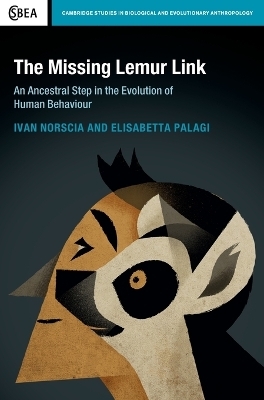
The Missing Lemur Link
Cambridge University Press (Verlag)
978-1-107-01608-8 (ISBN)
Lemurs share a common distant ancestor with humans. Following their own evolutionary pathway, lemurs provide the ideal model to shed light on the behavioural traits of primates including conflict management, communication strategies and society building and how these aspects of social living relate to those found in the anthropoid primates. Adopting a comparative approach throughout, lemur behaviour is cross-examined with that of monkeys, apes and humans. This book reviews and expands upon the newest fields of research in lemur behavioural biology, including recent analytical approaches that have so far been limited to studies of haplorrhine primates. Different methodological approaches are harmonised in this volume to break conceptual walls between both primate taxa and different disciplines. Through a focus on the methodologies behind lemur behaviour and social interactions, future primate researchers will be encouraged to produce directly comparable results.
Ivan Norscia carries out research at the Natural History Museum, University of Pisa, Italy. He started investigating the behavioural ecology of lemurs in dry and wet forests of Madagascar and through his research has contributed to the redefinition of a lemur species (Avahi meridionalis). His research later expanded to the behaviour of monkeys, apes and humans. Elisabetta Palagi is a department member of the Natural History Museum, University of Pisa, Italy. Her research centres upon lemur individual recognition and multimodal signalling, which has expanded to other primate and non-primate animals. Most recently, in conjunction with Ivan Norscia, she has adopted a cross-species comparison approach to shed light on the biological foundation of human behaviour.
An opening message Jane Goodall; Foreword Alison Jolly and Ian Tatterall; Preface; Part I. Communication: From Sociality to Society: 1. Who are you? How lemurs recognize each other in a small centred world; 2. What do you mean? Multimodal communication for a better signal transmission; 3. Vertical living: sexual selection strategies and upright locomotion; Part II. How Conflicts Shape Societies: 4. Bossing around the forest: power asymmetry and hierarchy; 5. Something to make peace for: conflict management and resolution; 6. Anxiety...from scratch: emotional response to tense situations; Part III. Why Lemurs Keep in Touch: 7. Playing lemurs: why primates have been playing for a long time; 8. Sex is not on discount: mating market and lemurs; 9. Understanding lemurs: future directions in lemur cognition; Afterword Michael Huffman; Index.
| Erscheinungsdatum | 28.05.2016 |
|---|---|
| Reihe/Serie | Cambridge Studies in Biological and Evolutionary Anthropology |
| Nachwort | Michael Huffman |
| Vorwort | Alison Jolly, Ian Tatterall |
| Zusatzinfo | 1 Tables, black and white; 72 Halftones, unspecified; 7 Line drawings, unspecified |
| Verlagsort | Cambridge |
| Sprache | englisch |
| Maße | 180 x 253 mm |
| Gewicht | 800 g |
| Themenwelt | Naturwissenschaften ► Biologie ► Evolution |
| Sozialwissenschaften ► Ethnologie | |
| Sozialwissenschaften ► Soziologie | |
| ISBN-10 | 1-107-01608-8 / 1107016088 |
| ISBN-13 | 978-1-107-01608-8 / 9781107016088 |
| Zustand | Neuware |
| Haben Sie eine Frage zum Produkt? |
aus dem Bereich


